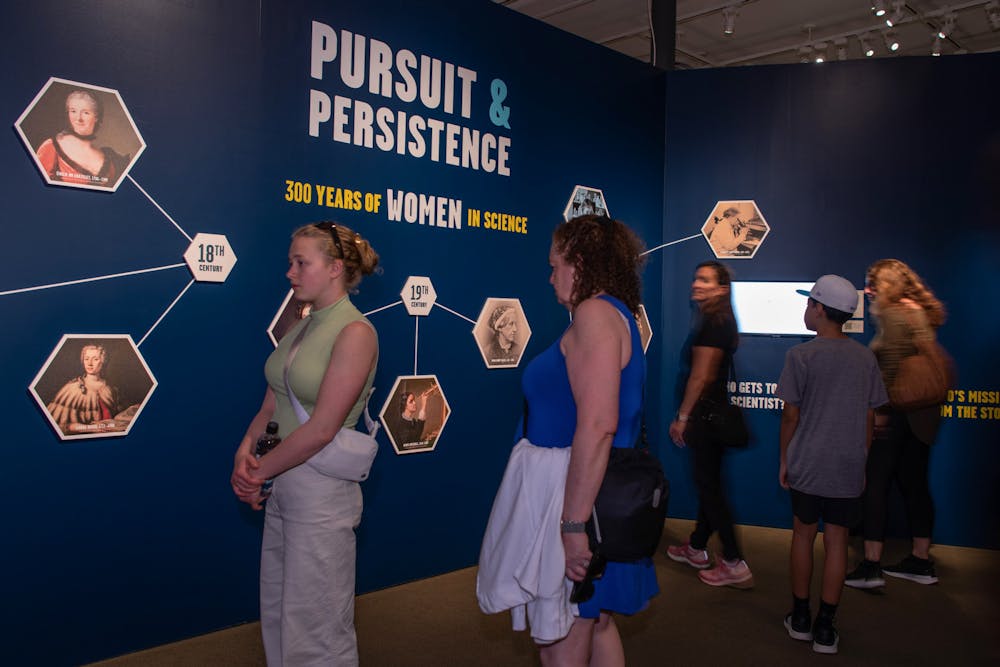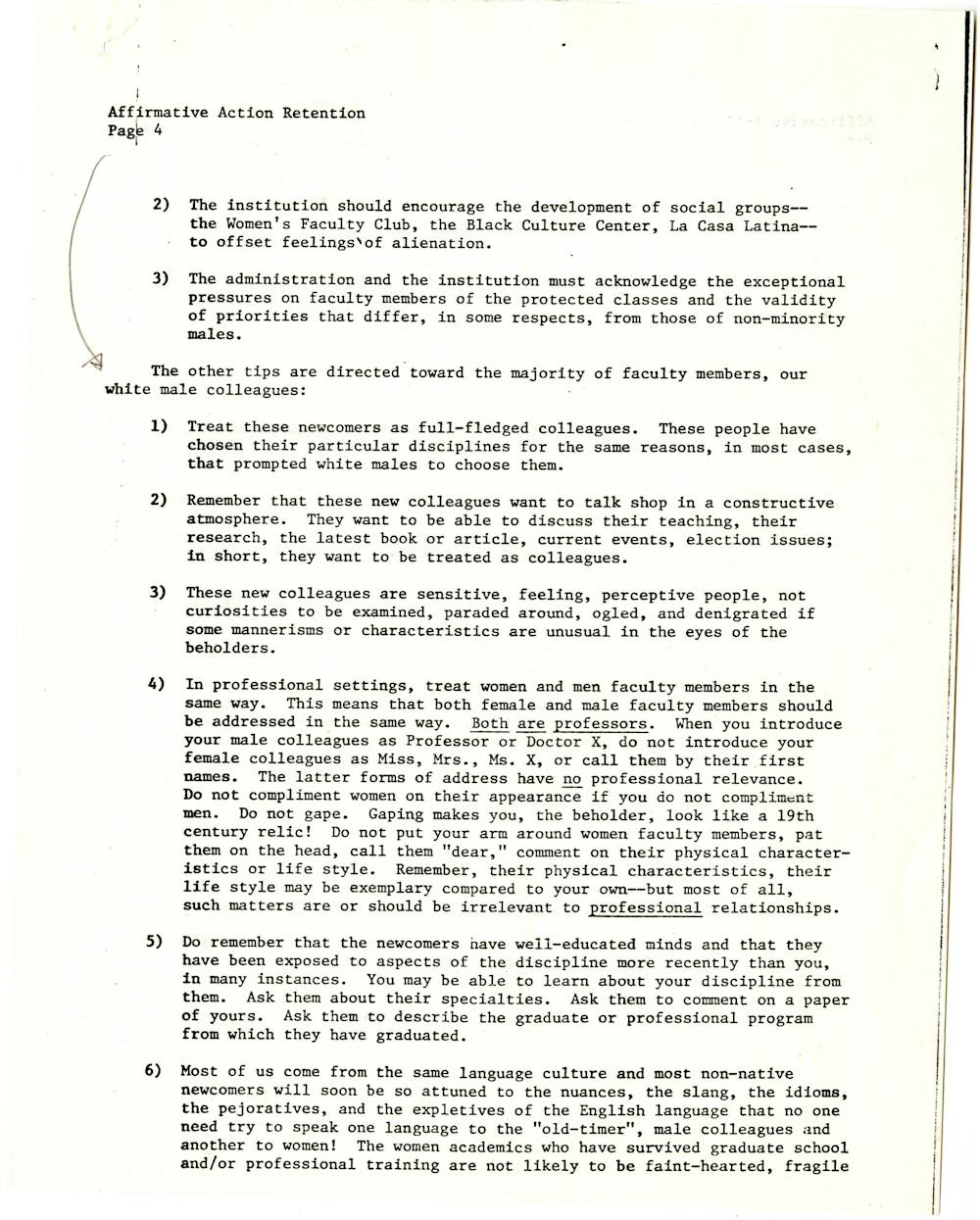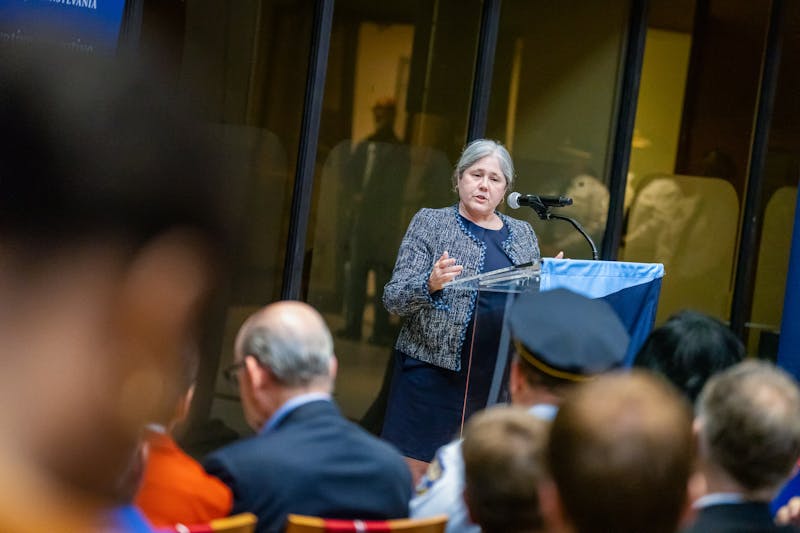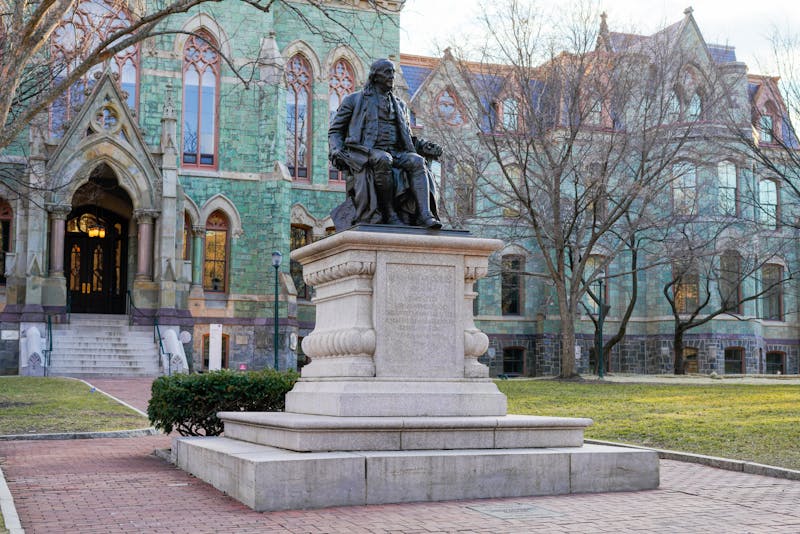
The American Philosophical Society Museum's latest exhibit, which honors women’s achievements in science over the last three centuries, features a document written by biochemist and former Penn professor Mildred Cohn.
The exhibit, titled, "Pursuit & Persistence: 300 Years of Women in Science," opened March 31 and is scheduled to run until December 30. It displays documents and artifacts, most of which have never been exhibited before, from nine prominent women scientists dating back to the 1700s — including a typewritten piece by Cohn, a professor of physiological chemistry at Penn in the 1960s.
Cohn's biochemistry research contributed to the development of medical instruments such as the MRI, and she received the National Medal of Science in 1983 for her study of enzyme catalysis. The document instructs her white male colleagues on how to interact with women in the workplace.
Cohn was involved in representing women and people of color among University faculty and the student body. An affirmative action project took place at Penn during her time as a professor, and the document mentions people of color joining the University, according to APS Programs and Communications Officer Jessica Frankenfield.

From American Philosophical Society.
“Her memo gets at the intersection of women and scholars of color and what they were facing in such an institution," Frankenfield said.
Among the other artifacts and documents featured are geneticist Barbara McClintock’s handwritten Nobel acceptance speech, which she won for her research on jumping genes in maize, science teacher Jeannine Duane’s NASA flight suit, and scientific artworks from the artist Rebecca Kamen.
According to Frankenfield, the museum often receives 500 or more visitors per day. Guests are encouraged to also consider the women who are not represented in the records.
“In some cases these stories are very hidden within the papers of the men — [the women’s] spouses or colleagues,” Mary Grace Wahl, the associate director of exhibitions and collections at APS, said. “It was difficult to decide which women to highlight.”
The exhibition’s sister project, “Visualizing Women Scientists,” is an online representation of the connections between women who contributed to scientific advancement. The project illustrates the relationships that supported their work — for example, scientists who published together or recommended each other.
Wahl said that including works from the 1700s, rather than focusing on more contemporary scientists, demonstrates the extent of women-led contributions to science throughout history.
The Daily Pennsylvanian is an independent, student-run newspaper. Please consider making a donation to support the coverage that shapes the University. Your generosity ensures a future of strong journalism at Penn.
Donate






